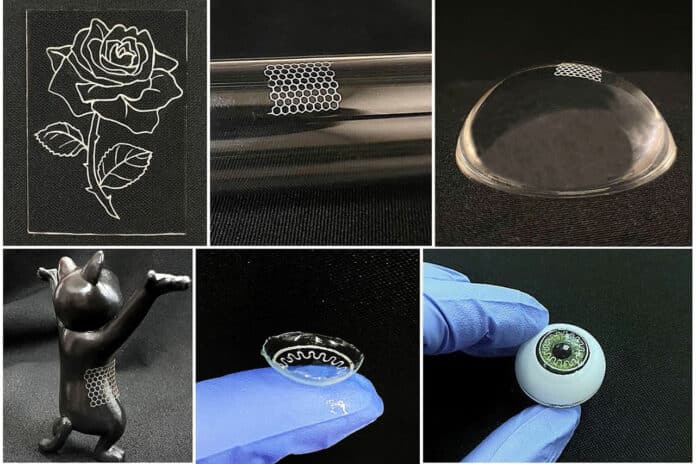Flexible and printed electronics is an emerging technology with huge potential. However, the printing of circuits onto curved surfaces is still very challenging.
Now, a research team from North Carolina State University has demonstrated a new technique for directly printing electronic circuits onto curved and corrugated surfaces.
The procedure addresses two shortcomings of existing techniques for creating printed electronics onto existing surfaces. First of all, the existing techniques require the use of polymer binding agents in the ‘ink’ to print the circuits. Those agents impair the circuit’s conductivity, so an additional step is required to remove those binding agents after printing.
In addition, these printing circuits can typically only be printed on flat surfaces. But many applications require surfaces that aren’t flat, and that’s where the new technique comes in.
The new technique, developed by a team led by Yuxuan Liu, doesn’t require binding agents, and that allows you to print on a variety of curvilinear surfaces. It also allows you to print the circuits as grid structures with uniform thicknesses.
The technique begins with the creation of a template for the relevant application that incorporates a specific pattern of microscale grooves. The template is used to replicate that pattern in a thin elastic polymer film, which is subsequently applied to the curved target surface (flat or curved).
At this point, the tiny grooves in the polymer are filled with a liquid solution containing silver nanowires – drawn into the membrane by capillary force automatically. This solution is then allowed to dry to room temperature, leaving behind silver nanowires in soft material with the desired shape and circuit pattern.
In proof-of-concept tests performed so far, the researchers created three prototypes with circuits printed on them. These prototypes include a smart contact lens that could be used to measure the fluid pressure of the eye; a flexible, transparent electrode, which could be used in solar cells or on touch panels; and a latex glove with integrated pressure sensors, which has applications in robotics and human-machine interface applications.
“We think this could be scaled up pretty easily, in terms of manufacturing,” says Yong Zhu, corresponding author of a paper on the work. “We’re open to talking with industries who are interested in exploring this technique’s potential.”
Journal reference:
- Yuxuan Liu, Brendan O’Connor, Michael Zheng, Jingyan Dong, and Yong Zhu. Curvilinear soft electronics by micromolding of metal nanowires in capillaries. Science Advances, 2022; DOI: 10.1126/sciadv.add6996
